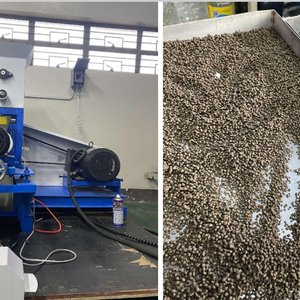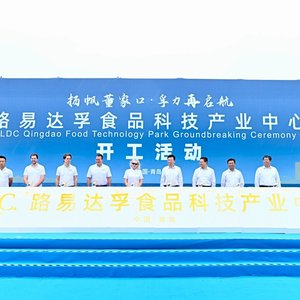Merck Animal Health (known as MSD Animal Health outside the USA and Canada) has obtained regulatory approval in Brazil to begin marketing AQUAVAC® Strep Sa, an inactivated vaccine that aids in protection against Streptococcus agalactiae infections in tilapia and other susceptible fish species.
“AQUAVAC Strep Sa represents a technological breakthrough that is expected to help Brazil’s tilapia producers reduce losses from disease and make production even more sustainable in the future,” said Rodrigo Zanolo, MV, MSc, a technical representative from MSD Animal Health, Brazil, during the official launch of the product in November.
Lasting protection
AQUAVAC Strep Sa, an oil-adjuvanted vaccine, is administered intraperitonealy as a single injection dose to fish weighing no less than 15 grams. Laboratory studies conducted during the development of the vaccine show that high levels of protection develop by 21 days post-vaccination (with temperatures at 28°C) and that protection lasts for at least 30 weeks.
In a study conducted at the Fish Immunopathology Laboratory at Paraná State University, Brazil, investigators challenged 180 Nile tilapia with an S. agalactiae Biotype II strain isolated from area tilapia farms. Mortality was significantly lower in groups vaccinated with AQUAVAC Strep Sa than in unvaccinated, challenged fish, according to Rogério Salvador, PhD, professor at the university’s Agrarian Science Center and coordinator of the laboratory.
“We concluded that AQUAVAC Strep Sa is a highly efficacious and safe product to protect against disease in tilapia caused by S. agalactiae Biotype II,” Salvador reported earlier this year at the World Aquaculture Society conference in Natal, Brazil.
High returns
Two controlled field trials with more than 60,000 fish were also conducted at separate commercial tilapia-production sites with a history of acute mortality and a positive diagnosis of S. agalactiae Biotype II. AQUAVAC Strep Sa proved highly effective in both trials, significantly (p < 0.05) reducing the S. agalactiae Biotype II (serotype Ib)-associated mortality throughout the production cycle. After the development of immunity, vaccinated fish showed better survival, improved biomass gain and feed-conversion rate than unvaccinated fish. The vaccine also proved to be safe for fish. Furthermore, the field trials demonstrated that AQUAVAC Strep Sa delivered a high return on investment (ROI). After discounting vaccination costs, the ROI was 5.3 to 7.4 times higher in vaccinates than unvaccinated fish, Zanolo said.
“We must also consider that vaccination results should be even more dramatic in commercial production, since protecting large fish populations could result in decreased disease pressure in the field, which can be reflected in overall benefits for intensive tilapia farms,” Zanolo said.
Significant losses
S. agalactiae is a bacterial disease that has led to significant losses for tilapia producers because it tends to strike fish well into the grow-out period, after considerable resources have been invested.
According to Zanolo, fish stressors such as high temperatures, competition for food and intense fish-to-fish contact are responsible for an increased incidence of streptococcosis, which is characterized by bulging eyes, swimming in circles, a swollen belly, nodular lesions and high mortality. If left uncontrolled, he added, S. agalactiae Biotype II infection could cause mortality rates of up to 90 percent in pre-market age fish after substantial feed volumes have been consumed. Significant declines in feed conversion and weight gain are also common in infected fish.
Most prevalent isolate
Epidemiological surveys conducted by Merck Animal Health in major tilapia-producing markets have collected over 1,000 bacterial isolates from tilapia reared at 74 sites in 14 countries. Streptococcal species were the dominant bacterial pathogens, accounting for more than half of all bacteria identified. S. agalactiae was more prevalent than S. iniae. Of the S. agalactiae isolates, Biotype II accounted for 56 percent compared to 26 percent for Biotype I.
“These data showed a clear geographical segregation of the biotypes, with S. agalactiae Biotype II being the only strain isolated from Latin America and Indonesia,” Zanolo explained.
For more information about AQUAVAC Strep Sa, go to http://aqua.merck-animal-health.com, email aqua@merck.com or contact your local Merck Animal Health representative.







